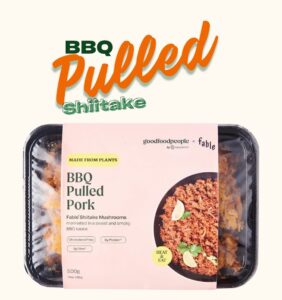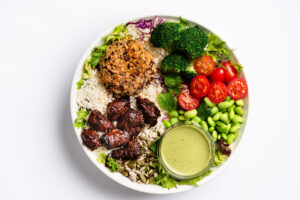Your first thought might be: “Wait, there’s seasonal squashes?” That’s right, squashes in all shades of yellow and green flood the market during summer, going beyond year-round variants like yellow squash and green zucchini. Unlike winter squashes, these varieties of summer squashes have soft, thin skin that is perfectly edible, with varying degrees of light to dense flesh. They have many culinary uses from being sauteed and used in spaghetti, to being roasted and topped with Parmesan cheese and onions. Not only are they delicious, they also come with great nutritional benefits!
General Benefits of Summer Squashes
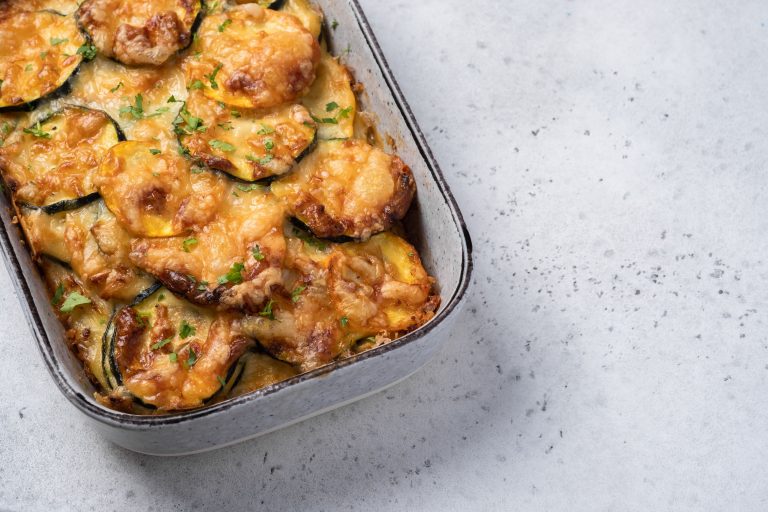
Summer squashes can be eaten cooked or raw- both ways provide you with lots of nutrients. They have a tender flesh that usually needs a shorter time to cook than winter squashes because they are picked when they’re relatively immature. Moreover, because of their mild flavour, they pair well with stronger and sharper flavours, like those in grilled meats, tomatoes, basil, mint and ginger.
- Most squash are loaded with potassium and magnesium. The former helps regulate fluid balance, muscle contractions and nerve signals. The latter helps lower blood pressure and may regulate type 2 diabetes by regulating blood sugar levels.
- Summer squashes contain many antioxidants such as vitamin C and magangese. This helps protect the body from the effects of oxidative stress, which may help strengthen the immune system and ward off diseases.
- The fibre in summer squash promotes colon health. They are also low in calories while being high in vitamin A (aids in normal vision, healthy skin and protects against infections) and vitamin C (helps prevent cataracts, heal wounds and keep teeth and gums healthy).
- Beta-carotene from the squash may help slow the progression of macular degeneration and reduce the chances of related vision loss. It also plays a role in protecting the skin from sun exposure.
- Regular consumption of summer squashes may help you lose weight because it is low on calories and full of fibre which makes you feel satiated for a longer period of time. Also, its high-water content keeps you hydrated.
Notable Summer Squash Varieties
1. Zucchini
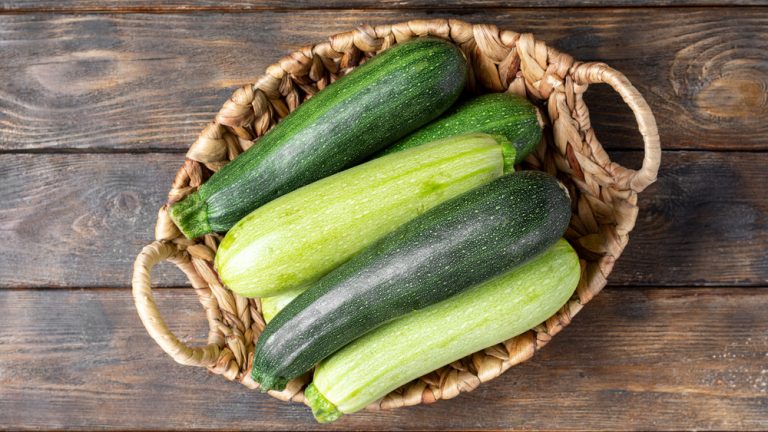
Green zucchini is a year-round staple but they’re at their freshest during the summer season. Stick to the smaller ones for better flavour and texture. It has a mild taste, so you can mix it with other greens to create a flavourful wrap or salad. Larger zucchinis can be stuffed.
Note: Zucchini is the Italian name of this vegetable and is used in North America and Australia. It is referred to as “courgette” in Europe.
2. Yellow Zucchini
Not to be confused with yellow squash, this zucchini doesn’t taper at the neck. It is slightly sweeter than green zucchini, but can be used in the same way as it.
3. Yellow Crookneck Squash
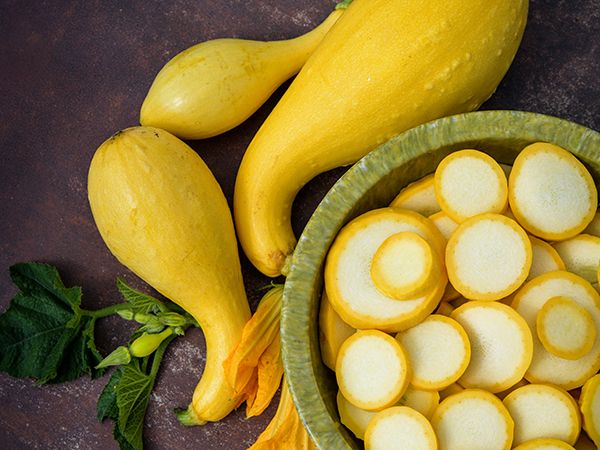
Crookneck squash has a bulbous bottom and slender neck that’s curved at the top. It has larger seeks and a thicker, waxier skin than many other squash varieties. This shape can make it harder to slice into rounds, so dice it and toss it with some diced zucchini for a colourful side dish.
4. Yellow Straightneck Squash
Yellow straightneck squash closely resembles crookneck squash with its tapered neck and bulbous base, but its neck doesn’t curve as much, if at all. It has a buttery, nutty flavour which you can feature in side dishes and in soup.
5. Pattypan Squash
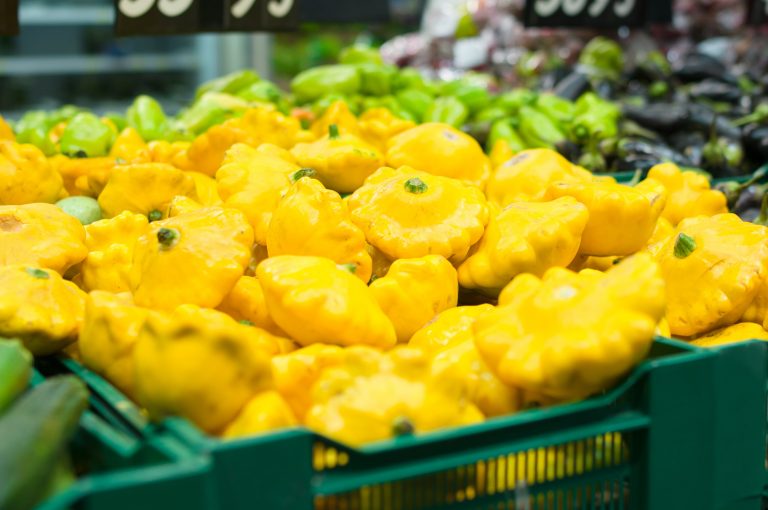
Although it is less attractive than other squash varieties, pattypan squash contains more Vitamin A, niacin and folate than zucchini. They are the sweetest when they’re young and small because when they get larger, they taste like a potato. They have white and juicy flesh. If you cut pattypan squash into wedges, you get uniform shapes that are easier to cook with.
How to Pick and Store Summer Squashes
- Choose squash that are firm and heavy for their size.
- The stem at the end should be fresh and green.
- You always want a squash with good and glossy skin, no matter its variety. This means no unblemished skin and nicks, pits, bruises or soft spots.
- If you get a medium-sized vegetable, you’ll be able to get more servings out of it.
- If you see an overly large squash, it may have a different flavour, hard seeds and be too fibrous.
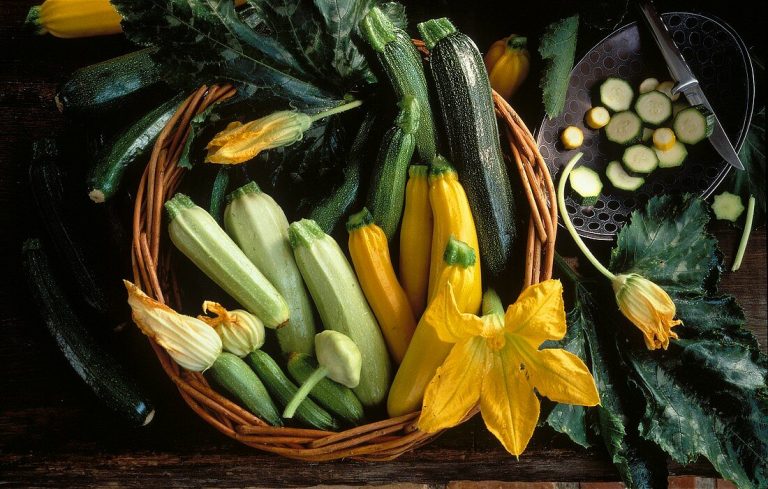
- Store unwashed summer squash in a protected place inside the refrigerator, wrapped in a damp towel or plastic bag (with one end open) for up to one week.
- However, don’t store it next to apples, avocados or peaches that are all natural ripening agents that release ethylene gas.
- Some squashes, like zucchini, can be blanched and kept in the freezer for up to 3 months.
- Before using, wash well and trim the ends.



